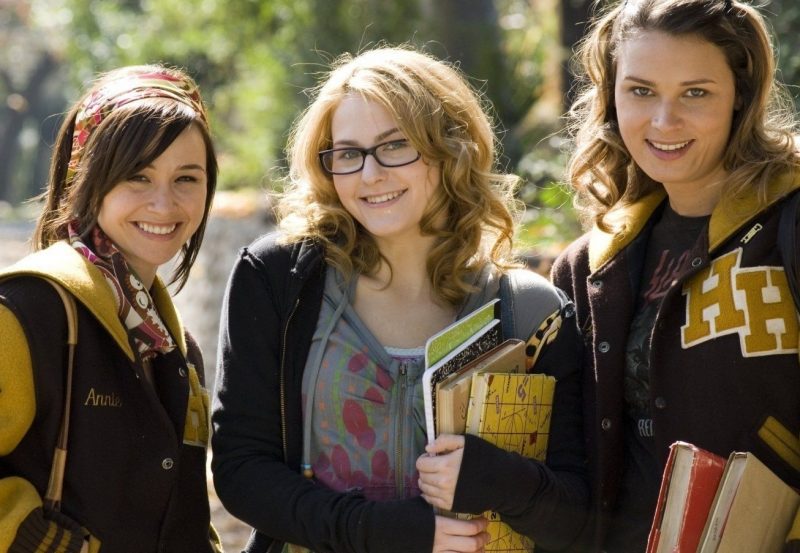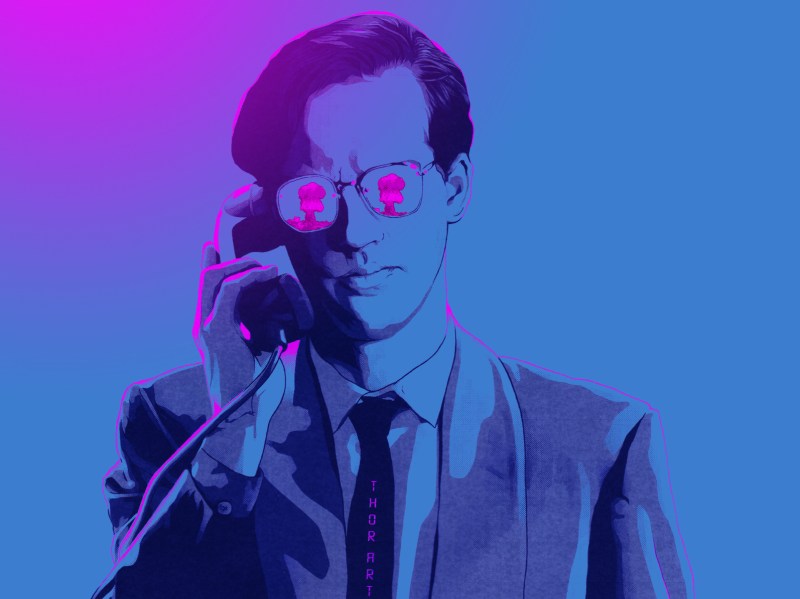VHS Revival attempts to understand what was never meant to be understood
Michael Myers is a very precious character indeed. Of all the horror villains in all the franchises, his handling has proven the most difficult, a fact made apparent by a quarter of a century of underwhelming sequels. John Carpenter’s Halloween was a masterpiece of low-budget filmmaking, one of those magical movies where everything came together at just the right time. It was authentic, carefully controlled and oozed foreboding, buoyed by one of the most iconic scores in horror movie history. Most importantly, it didn’t carry an ounce of fat. It was respectful to its antagonist in a way that made ‘The Shape’ a cultural icon. It was a movie that thrived on mystique.
There were no plans for a Halloween sequel right off the bat. The original film’s open-ended finale left much to the imagination, its less-is-more narrative requiring no further expansion. But money talks and evil walks, and with the slasher sub-genre booming and Halloween derivative Friday the 13th returning with a masked killer of its own a few months prior, the temptation was just too great. For the sequel, Carpenter would pass directing duties over to first-time filmmaker Rick Rosenthal, he and long-time collaborator Debra Hill penning the screenplay. With cinematographer Dean Cundey back on board, Halloween II came as close as possible to recreating the inimitable aura of its predecessor, but a sequel that Carpenter would later call a “horrible movie” would come with the usual problems, overexposure like kryptonite to a character of Michael’s cinematic persuasion. In the realms of slasherdom, Halloween II is still one of the best out there, but in its heart of hearts it knew that it just wasn’t that necessary.
Perhaps sensing this all along, Carpenter would seemingly kill off Myers and long-time nemesis Dr. Samuel Loomis in favour of Halloween III: Season of the Witch. The idea — one that never came to fruition — was to have a different story and cast of characters each year, giving horror fans an annual event free of the Myers legacy save for the title. Audiences didn’t buy it, and the series was damned to commercial purgatory for more than a half-decade. When Myers finally did re-emerge in 1988‘s Halloween 4: The Return of Michael Myers, it was for a mostly bog-standard massacre in the Voorhees mould. Halloween 4, even after adjusting for inflation, brought in considerably less than the first two instalments, proving that Myers was no longer the draw he once was, and it would only get worse. Later sequels would attempt to elaborate on the character. They tried to humanise him, paganise him, even going as far as to portray him as a sympathetic character. By the time Scream derivative and supposed saviour Halloween: H20 had finished trying to take the series back to its roots, the Myers legend had been distorted beyond all recognition.

All of this told us that any and all attempts at recapturing the original Halloween magic were futile, as were attempts to try something different — at least up to that point. For one thing, the property was too big to ever recreate Carpenter’s grainy, shoestring original, and when a character relies so heavily on mystery, different is typically poison as it generally means more. But the shelf life for such an iconic character is without expiration, and even the most precautionary of Myers fans would always have an itch to scratch. Such a failure was the Halloween franchise in offering something worthwhile that there was always a voice in your head telling you that things could still be improved upon. In 2007, a time when horror reboots were still something of a novelty, Halloween was both the best and worst concept to revisit, and revisit it they would.
Oh, come on, babe. I want to do it with the mask on.
Steve Haley
The man at the helm would be lifelong horror fan Rob Zombie. A former musician who’d achieved notable mainstream success with ultra-violent grindhouse movies House of 1000 Corpses and The Devil’s Rejects, he hardly seemed like the man for the job, but despite the kind of splatter he had become synonymous with, The Devil’s Rejects was able to make its extreme violence palatable thanks to an anarchic sense of humour. It wasn’t a great movie, but it was more than just violence for the sake of it. Whatever his plans were for the Myers character, it would be difficult to produce something as pointless and as underwhelming as 2002‘s reality TV borefest Halloween Resurrection, a movie that killed off series protagonist Laurie Strode for a second time thanks to multiple timelines that now total 5. With Rob Zombie’s Halloween, Dimension Films had a shot at redemption, and as always fans of the franchise were quietly hopeful.
I for one was mortified by what Zombie did to the Myers character ― as much as he seems to adore the series, he’d clearly failed to learn the lessons of past efforts. That, or he felt there was nowhere else to go. Cinema had evolved since 2002, origins stories becoming increasingly popular, so what the hell, right? He had to try something. I chose to review the Director’s Cut. After all, that was the director’s original vision, and I didn’t want to rain on the theatrical cut only to discover that another version existed that was a marked improvement on what the studio had deemed worthy. Ironically, the theatrical cut, which I watched some time after for comparison reasons, was marginally less offensive, but just as fundamentally flawed.

Before we get into the thick of it, I want to make something clear: I don’t buy into the ‘all reboots are pointless’ shtick. I’m all for trying something new and detest having to jump on any bandwagon whose sole purpose is to criticise for the sake of it, but make no mistake about it, 2007’s Halloween is an abomination of a movie. I don’t use the word abomination lightly, either. So averse am I to heavily criticising anything that I typically avoid movies that inspire such personal rancour. I don’t avoid bad movies, because many of them are enjoyable for reasons purposeful or otherwise. After all, films should only be judged on what they set out to achieve. A cheapjack action movie such as American Ninja will receive just as much enthusiasm from me as a Martin Scorsese tour de force. The two are not comparable, but they don’t have to be because both inspire joy. Rob Zombie’s Halloween is oppressively joyless. It’s a rare occasion that I struggle to stay the distance with any movie, but this one proved a real challenge.
The very best horror movies possess a sense of irony. They understand that an audience is there to be scared, but also know that the genre is a form of escapism. Psycho terrified audiences back in 1960 for its unprecedentedly graphic shower scene, but Norman’s cross-dressing duality was pure mocking. The Texas Chainsaw Massacre was incredibly disturbing for the time, but Leatherface and his family were a carnival grotesquery, the infamous dining table scene as ludicrous as it was nerve-shattering. Let me give you a more direct comparison. There’s a famous scene in the original Halloween where one of Michael’s victims heads to the kitchen to fetch a beer for his lover, only to meet his inevitable fate. Returning in his place is a motionless Michael hiding beneath a bed sheet. In doing so he is portraying a ghost — a fitting prank for the time of year. He is also wearing his previous victim’s glasses, which is enough to fool his next victim into believing it’s someone else hiding beneath the disguise. It’s a humorous moment, but one that proves just as ominous. This is Michael echoing comedy but not really understanding it. He is an imitation of humanity, and though we grin at the very notion, it is also deeply disturbing. It has meaning beyond the obvious.
Give me a fucking break. He’s probably a queer. He’s gonna grow up, end up cutting his dick and balls off and changing his name to Michelle.
Ronnie White
In 2007’s Halloween, Rob Zombie delivers a carbon copy of this scene, but it’s completely meaningless. Like the movie’s antagonist, the director delivers an impression of something that is rich with humour, but beyond the superficial it doesn’t translate in any way significant. It’s a homage the way paint by numbers is a homage to artistic endeavour. The only semblance of humour in Rob Zombie’s Halloween is the referential kind derived from an overabundance of cameos featuring such horror royalty as Ken Foree (Dawn of the Dead), Clint Howard (Evilspeak) and Brad Dourif (Child’s Play), which though cute in a fanboy sense only serves to cheapen the movie further, and is totally at odds with its otherwise nihilistic tone. It even brings series mainstay Danielle Harris back into the fold as a different character entirely. It attempts to be playful but we’re too bogged down to take it on board.

My main issue with Zombie’s Halloween is its complete lack of restraint, and an inability, or at the very least an unwillingness, to understand what makes the Myers character so indelibly special. The fact that Michael is elusive, omnipotent and shrouded in mystery makes the original Halloween as potent in the daylight as it is in the black of night. It’s hard to hate on Zombie, a talented individual, for trying something new, but when it comes to already established characters of Michael’s stature there’s a line you don’t cross. When you do, that character loses their identity, and Zombie goes so far beyond that line he may as well have devised an original character. I still would have disliked the movie, but I wouldn’t have resented it.
The sight of a pewee Michael emerging from the scene of his first crime in the original Halloween has more of an effect than any graphic indulgence anyone could dare to dream up. Imagination is our most powerful tool when it comes to suspending our disbelief and being frightened. We don’t need to have these acts rammed down our throats, we just need a trigger. Rob Zombie’s Halloween sees a young Michael commit a triple homicide in extreme detail, when one brutal act, punctuated in the first movie by the young actor’s tenuous expression of shock/exultation, has far more impact. In 2007, Michael commits so many graphic atrocities in the movie’s first act that by the time he’s ready to revisit Haddonfield after years of incarceration we’re already desensitised. There is no mystery to the character, no sense of spatial hegemony. Carpenter’s Halloween succeeds as a slowly building concerto, a nerve-jangling journey that plays us like a rusted cello in the same vein as Hitchcock. Zombie’s Halloween begins like a self-indulgent 15-minute guitar solo, the remainder of the movie strumming the same monotonous chord.
I’m no prude, but for that kind of violence to be justified it has to mean something. A movie like Fargo has shocking instances of violence, but every one of them means something, and you remember those moments not because of the violence itself, but because of when and how it occurs and what it means for the characters involved. By the time we reach the second act of Rob Zombie’s Halloween we’ve endured so much mindless bloodshed we’re numbed to any cause and effect, and the final act, the part of the movie that is supposed to provide the payoff, drags on to the point where it seems like it will never end. There’s an art to shock tactics — some of the genre’s most successful movies were forged on them — but Zombie’s almost masturbatory indulgence ends up having the opposite effect. Unlike some of his previous work, it’s brutality for the sake of brutality, with a graphic rape on a peripheral character thrown in for good measure. The portrayal of rape can be devastatingly effective given the right context. Here, it’s just as meaningless as the violence.
His eyes will deceive you; they will destroy you. They will take from you your innocence, your pride, and eventually your soul. These eyes do not see what you and I see. Behind these eyes one finds only blackness, the absence of light. These are the eyes of a psychopath.
Dr. Samuel Loomis
The first half of Rob Zombie’s Halloween concerns itself with understanding how a character once described as “purely and simply evil” could become such a monster. In a 2016 interview with the New York Film Academy, Carpenter would express his feelings on such an angle in no uncertain terms, “I thought that (Zombie) took away the mystique of the story by explaining too much about (Michael Myers). I don’t care about that. He’s supposed to be a force of nature. He’s supposed to be almost supernatural.”

This makes the nature of the movie’s second act all the more perplexing. After an altogether different set-up, Zombie then decides to pay homage to the original by giving us an almost straight-up re-tread, one robbed of all potential by everything that went before. We have those shots of a mysterious and strangely elusive entity stalking the leafy suburbs in broad daylight, but by that point we know everything there is to know about Myers. He’s no longer a boogeyman, just a straight-up psychopath in a mask. What’s the sense in giving us such an intimate first act only to then try and recreate the original movie? It’s completely counterproductive.
The effect is so without merit that the two acts may as well be from separate movies. Not only do we know exactly what’s coming, there’s nothing in the world that could shock or surprise us. Without this, Rob Zombie’s Halloween is not a horror movie, it’s a deadening exercise in graphic futility with no real pay-off. The only denouement has the screenplay trying to establish sympathy for our killer after he tracks down his younger sister and holds up a family picture in some kind of desperate plea, but the character’s handling up until that point is so reckless that the gesture seems completely empty, a half-assed attempt to attach some meaning to Michael’s relentless rampage.
Some may argue that Zombie achieved what he set out to by giving us a completely different take on the Myers character, but it became evident long ago that it just isn’t possible. It can be done in a literal sense, but anything beyond the simplicity of the original narrative results in a completely different character beyond the music and the mask, a fact proven by David Gordon Green’s recent return to form, Blumhouse’s 2018 sequel coming as close to the bare bones original as we’ve seen save for a questionable flourish or two. 2007’s incarnation does more damage to the character than any other instalment. There were sillier representations, some were more commercially cynical, but none of them explored the character in such mystique-crushing detail. If you want to create original characters and treat them with such abandon, that’s fine, but for a known horror fanatic to further explore the Myers character suggests that they have an appreciation for what makes that character tick, and Rob Zombie’s Halloween suggests nothing of the sort.
Director: Rob Zombie
Screenplay: Rob Zombie
Music: Tyler Bates &
John Carpenter
Cinematography: Phil Parmet
Editing: Glenn Garland





































I have to disagree about the Devils rejects. That movie is great. It’s enjoyable, grim and a fitting update to the Texas chainsaw Massacre series without having to remake it
LikeLike
I personally wouldn’t call it great, but it’s miles more fun than the Halloween reboot. It has the kind of subversive humour really lacking here. It’s a solid effort.
LikeLike
If the movie wasn’t called Halloween and the characters were obviously changed, it would of been ranked much higher. Personally I enjoy both of the Rob Zombie Halloween’s more than the new one but to each his own. There is a level of expectation with Myers name and any director will always be chasing the dragon to achieve the success of the original.
LikeLike
That’s fair enough. I just couldn’t find anything about this movie that I liked, which is odd for me because I pride myself in always finding something. It was a deadening experience.
LikeLike